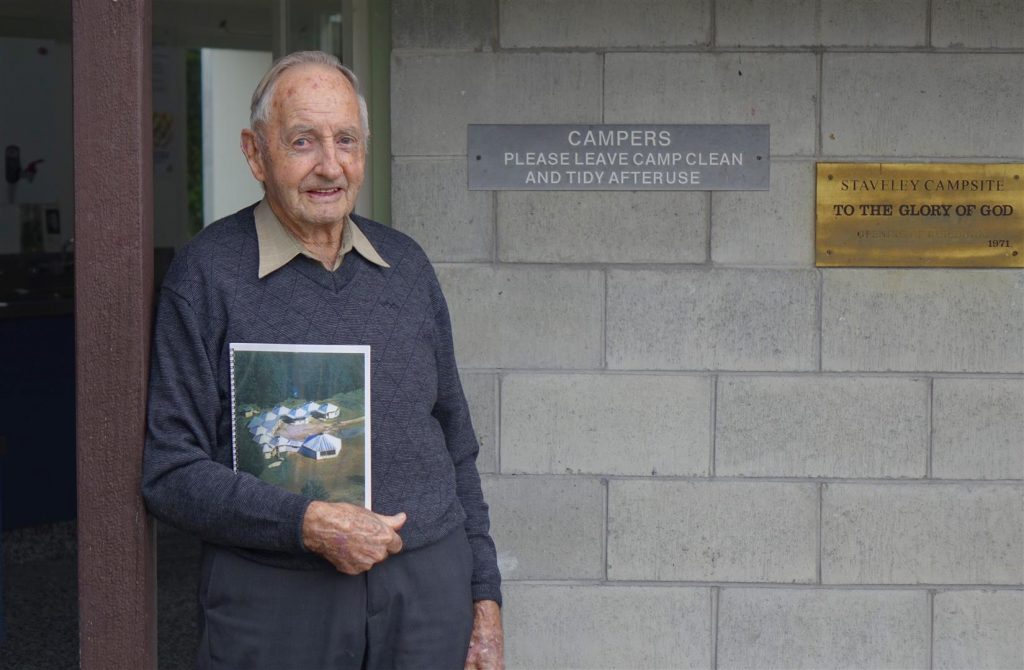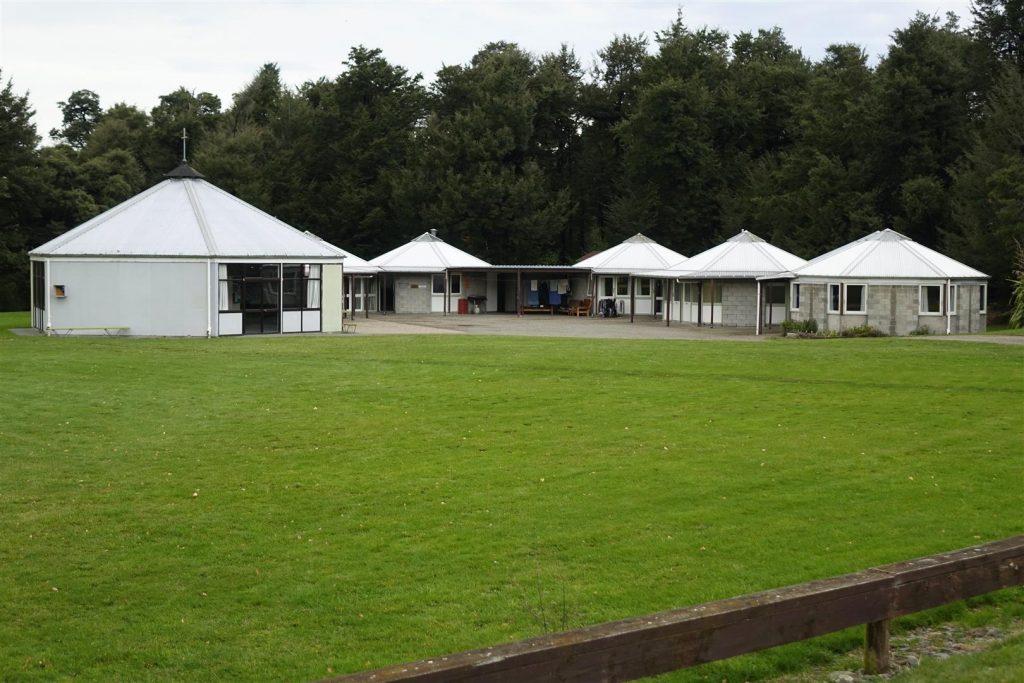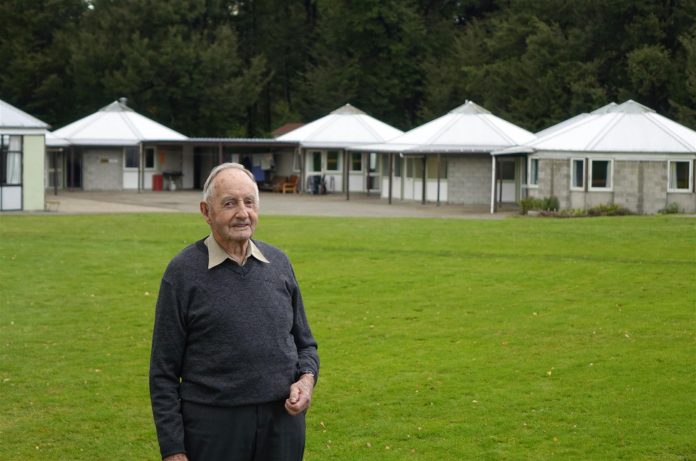Nestled in the foothills of Mid Canterbury is a campsite that since the 1950’s has been providing facilities used by thousands of youth and adults.
‘‘In the 1950’s Bible Class camps werea big thing,’’ said retired Staveley campsite volunteer Gilbert Donaldson who use to attend them.
‘‘The Mid Canterbury Presbyterian Bible District Committee were needing to find a permanent spot for storage as they had started to acquire gear like pots and pans.’’ Three sites were considered, a bare piece of land, the old Bushside School and Staveley. The Staveley site was chosen and purchased in 1959, at a cost of 275 pounds for 24 acres of bush and 10 acres of ground.
The first campsite committee was formed in 1968 and the following year began drawing up plans for the buildings.
A tender of $22,000 was accepted in 1970 to construct seven hexagonal bunk rooms. The hexagonal design, ‘‘came from a North Island company we thought they were amazing. The only problem is they had concrete roofs and we tried also sorts of things as the condensation built up. They were rotting,’’ Gilbert said.
Two extra roofs were purchased at the same time by Gilbert’s late father-in-law, Ted Banks. ‘‘These were used on the toilet and shower blocks,’’ he said.
In 2009 at a cost of $78,000 all the roofs were replaced with iron.
In February 1972 Rev GT Gilbert, the chairman of the Methodist Synod, officially opened the buildings.
The total cost for the buildings was $28,000.
Since then two further bunkrooms have been added along with other buildings.
By 1985 all loans were repaid and the campsite was debt free. Work then started on building a chapel.
Gilbert knows the campsite well having volunteered there for 45 years.
His family has strong ties with the camp, his daughter, Neroli Cross, is the booking agent, and her husband, Stuart, is the treasurer.

In 1959 Gilbert’s father-inlaw gifted the first buildings on the site.
‘‘The buildings were ex Ministry of Works building’s from the No 5 camp at Carew.’’
One of Gilbert’s job at the campsite in the early days was to help erect the fences, being a farmer this was something he knew how to do.
‘‘After farming all day on the Plains with the nor-westers it was great to go inland to where the winds dropped and it was cooler.’’
There have been three lots of fences installed at the camp. The original fences had to be replaced by deer proof fencing when they realised deer were coming out of hills at night and eating the vegetation.
The 2021 floods wrecked havoc on the fences so they were replaced.
In the construction of many parts of the camp they have come across rocks that had to be manually moved, one rock taking a day to move with crowbars and shovels.
Before the current buildings werebuilt the campers stayed in tents and the buildings on site were used for cooking.
The majority of the maintenance carried out at the campsite is undertaken by dedicated volunteers
The campsite is used by a variety of groups from craft groups, family anniversaries, church groups, scout and guide groups for camps, Jamborees and schools.
In August in 2017 a QEll National covenant was placed on 9.69 hectares of native bush.
The major project being undertaken at present is the upgrade and strengthening of the buildings which comes at a large cost and funding will be needed to help with this.
Today’s occupancy rate is around 60 per-cent.
A 50th anniversary celebration was recently held and Gilbert was given the honour of cutting the cake. ‘‘The cake was hexagonal and looked so great it seemed a shame to cut it,’’ he said.





